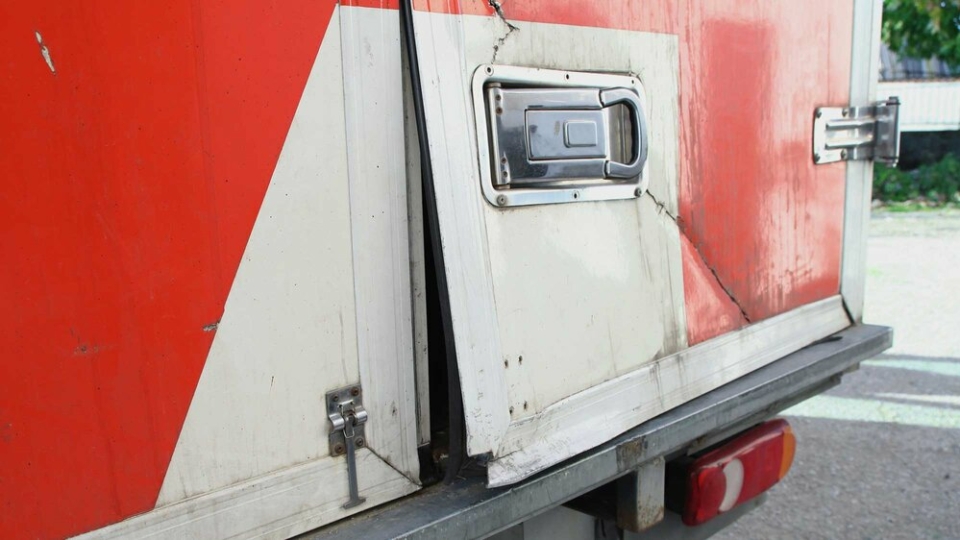Story by
Johnny Mccord
Tags /
- Business
- Cargo
- Insurance

2020 was a year unlike any other.
Confronted by COVID-driven disruption, economic uncertainty, and devastating storms, some cargo loss trends emerged—trends that we expect will continue into 2021.
What should you be mindful of in the year ahead?
Theft-to-order crimes on the rise
Just as freight industry professionals embrace tech platforms to operate more efficiently, so are the organized crime syndicates who target them.
Enter the Dark Web. Today, criminals are placing orders for commodities with the same ease as ordering toilet paper or a 77” OLED TV on Amazon. Today’s criminals can now have a buyer lined-up before ever cracking open a trailer—making them even harder to address.
The Transported Asset Protection Association reported an increase in theft-to-order last year—and they predict we’ll see more of these highly-targeted cargo thefts going forward.
Regionalized cargo theft activity surging
Organized crime syndicates are zeroing-in their efforts on the regions of the U.S. that offer the greatest opportunity. And, they found it in Dallas County, where theft activity in this massive distribution hub skyrocketed by 93% in 2020 over 2019, according to CargoNet.
Dallas wasn’t alone in its classification as a cargo theft “hot zone,” of course. Joined by Cook County, IL; San Bernardino County, CA; Los Angeles County; CA; and Shelby County, TN, these five U.S. counties represented 25% of all U.S. cargo thefts last year.
Mental health issues at crisis-level
We are in the midst of a national mental health crisis. In fact, at least 40% of Americans are struggling with a mental health condition linked to the pandemic, according to the CDC.
And, those who work in supply chain are perhaps particularly vulnerable. Many cannot work from home, and all are in an industry critical to our nation’s recovery. They’re under extraordinary pressure to perform—all while being more at-risk than ever before.
Poor sleep. Distraction. Unhealthy coping mechanisms. (And, honestly, who isn’t guilty of this?) They all pose threats to loads—whether as the result of an overwhelmed employee failing to spot something amiss and signing off on a fictitious pickup—or a devastating distracted driving incident.
Severe weather events growing more frequent and extreme
Yale Climate Connections reported that, in 2020, the planet was hammered by a record 50 billion-dollars in weather disasters. What’s more, 80% of that damage occurred right here in the U.S.
All indications suggest we’ll see increasingly frequent and severe storms this year, and beyond.
We only need to look to the maritime transport industry for recent examples of its impact. More than 2,675 containers have now been lost at sea in just the last two months—a loss that’s already double the World Shipping Council’s annual average.
Household commodities, food and beverage increasingly targeted
As COVID hit and toilet paper, sanitizing wipes, and household goods—like appliances—were nearly impossible to find, cargo thieves increasingly made these commodities our nation’s number one target.
Easily offloaded, food and beverage followed closely behind, as criminals sought out shipments of alcohol, snack foods, and boxed and canned meals. With evidence that’s quickly consumed and a narrow window for recovery, we expect these commodities will remain a prime target this year.
Partial load theft on the increase
Pilferage continues to climb, according to CargoNet. Increasing steadily each year, this form of theft was responsible for 22% of all cargo thefts reported in 2020 Q3.
Of course, the problem is likely far worse than the data suggests. Escaping notice by drivers who are then unable to identify precisely when the theft occurred, these crimes are underreported.
Fictitious pickups on the rise
Unchanged for two years, CargoNet reported a 163% spike in fictitious pickups in 2020 Q3.
Not only are logistics employees stressed and distracted, masks make thieves less likely to be identified, HOS rules suspensions render criminal drivers less likely to encounter enforcement, and the capacity crunch has the industry operating in hyperdrive—making everyone easier targets for fast-moving thieves.
Takeaways
When we asked Daniel Stanton to take a look at this article, he said it best: “One of the most important lessons from 2020 is that we need to incorporate risk into our supply chain planning and execution.”
Just as in our personal lives, we can be blindsided when we don’t understand how to integrate the good with the bad, and we in the supply chain industry have not fully integrated risk into our work in order to create harmony. Better put, sustainable practices require balancing risk with growth.
So, how can you best protect your business?
Taking a three-pronged approach to protecting your freight
We recommend those in the freight industry take a three-pronged approach to address cargo loss:
- Education: Training your drivers and staff to embrace a health and safety culture and serve as your first line of defense. (For health, you might consider headspace, and for cargo risk training, Cassandra Gaines ), ensuring they’re alert, fully aware of red flags, and actively engaging in security measures—especially for loads moving through storms and “hot zones.”
- Security: Investing in cargo security, like Tive, including asset-based tracking, secure locks, and intrusion detection technologies, as well as real-time dynamic routing to circumvent severe weather.
- Recovery: Because you can never reduce risk to 100%, protecting your cargo with transactional (aka affordable) all-risk coverage, like Loadsure, ensures shippers are made whole in a broader range of unavoidable loss scenarios—like inside theft and acts of God.
Hope for the best, prepare for the worst, as they say.
